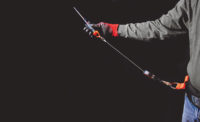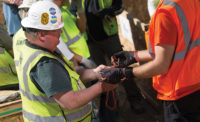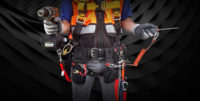Time to educate workers about dropped objects risks
Understanding ANSI/ISEA 121-2018

Released in Q3 of 2018, ANSI/ISEA 121-2018, American National Standard for Dropped Object Prevention Solutions, is the first standard of its type for dropped and falling objects prevention equipment – establishing minimum design, performance, and labeling requirements for product solutions and guidelines for testing.
What ANSI/ISEA 121-2018 covers (and what it doesn’t)
It’s worth repeating that the new dropped objects standard establishing minimum design, performance, and labeling requirements for manufacturers of product solutions that prevent falling objects and guidelines for testing that equipment. It does not address best practices in the field, like telling workers where they should connect a tool lanyard on their harnesses.
The current standard focuses on four classes of preventative solutions actively used by workers to mitigate dropped objects.
- Anchor attachments
- Tool attachments
- Tool tethers
- Containers
Regulatory oversight and enforcement
The American National Standards Institute (ANSI) is a private nonprofit organization that oversees the development of voluntary consensus standards for products in the United States. They have adopted 121, which was developed by the International Safety Equipment Association (ISEA), a group that represents manufacturers of safety equipment.
Voluntary consensus standards for safety products are the formalization of requirements for equipment, giving manufacturers’ guidelines for designing and testing product. These often become a way for end users to set a best practice on the job for what safety products to use.
Similar to ANSI Z359 for fall protection, ANSI/ISEA 121-2018 is now recognized as industry best practice, though not directly enforceable by OSHA. But while many believe they do not have to use tool tethering systems and securing containers on the job because OSHA has not written specific requirements to do so, the standard can be referred to under the General Duty Clause to interpret a better way to protect workers against falling objects.
OSHA references
OSHA does require employers to address falling/dropped objects hazards on the job. They mention this both in General Industry (1910.23; 1910.28) and Construction (1926.451; 1926.501; 1926.759) standards. Prevention > Protection: There is no argument that preventing dropped objects all together is a better practice than hard hats, canopies and ground-based safety zones. The latter can minimize damage and injury of a struck by falling object, but they do not prevent the items from falling in the first place.
ANSI/ISEA 121 formalizes and codifies the above to two points, creating the variables of an equation for OSHA to cite under the General Duty Clause. The equipment (attachments, tethering, containers) in 121 are the solutions to the equation.
Adoption cycle
Because this is the inaugural draft of 121, there is no adoption period for the standard. With no previous revisions behind it, manufacturers can release equipment as they design and test it to the standard if they wish (remember it is voluntary, so manufacturers do not have to make equipment that meets the standard). End users can implement the equipment when their policies require it.
Dropped objects injuries, deaths on the rise
The standard comes in response to the thousands of workers each year in the U.S. who are injured — and the hundreds who die — from being struck by a falling object, such as hand tools, instrumentation, small parts, structural components and other items that have to be transferred and used at heights. In 2016, the Bureau of Labor Statistics reports there were 255 fatalities and 47,920 reported injuries from dropped objects in the United States, making this the third-leading cause of injuries on the jobsite, according to OSHA.
Looking for a reprint of this article?
From high-res PDFs to custom plaques, order your copy today!







